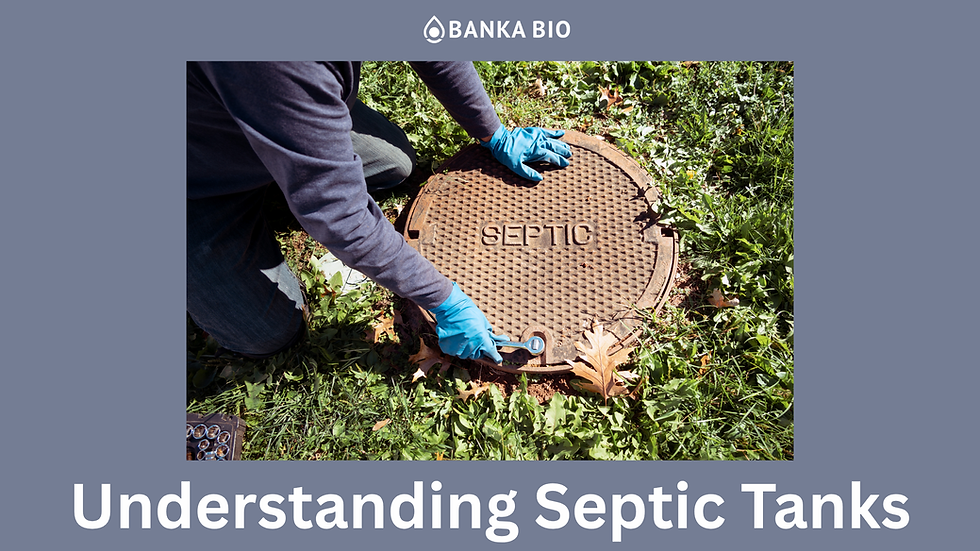Septic Tanks: A Fix but with Flaws
- Team Banka Bio

- Jul 10, 2025
- 2 min read
For decades, the septic tank has been the go-to solution for wastewater management in homes, institutions, and even commercial establishments without sewer connections. Simple, low-tech, and relatively low-cost, it stores and partially treats blackwater before the effluent is drained into a soak pit or open land.
At first glance, it seems to do the job. But is that enough in today’s world?

How a Septic Tank Works (and What Are Its Flaws)
A standard septic tank is a two- or three-chamber underground tank where solids settle at the bottom and scum rises to the top. The partially treated wastewater (effluent) then flows out into a soak pit or leach field.
While effective in separating solids, here’s what often goes unspoken:
No active treatment – it’s just storage and settling
Needs regular cleaning – usually every 6–12 months
Risk of groundwater contamination, especially with high water tables
No odour control – bad smells are common
Not scalable – fails under higher usage or poor maintenance
For individual homes or isolated rural locations, a septic tank might suffice (but never really does). But for schools, institutions, or growing communities, it's definitely a band-aid, not a solution, because of these flaws.
Enter the Biodigester: A Better, Safer, Smarter Alternative
At Banka Bio, we’ve built and installed thousands of biodigesters across India. Think of them as the next generation of septic systems, engineered for modern sanitation needs.
Unlike septic tanks, biodigesters:
Actively treat human waste through anaerobic bacteria
Convert waste into odorless, sludge-free effluent
Require almost zero maintenance
Last 25+ years with no regular desludging
Are approved by DRDO and used across railways, schools, army camps, and more
Why Biodigesters Make More Sense Today
As environmental regulations tighten and water security becomes a priority, we can no longer afford to rely on outdated systems that merely store waste. A biodigester doesn’t just contain human waste—it treats it at source.
The result? Cleaner surroundings, no groundwater contamination, and long-term savings.
Whether you’re building a rural toilet block, planning infrastructure for a school, or setting up sanitation in remote areas, a biodigester is the sustainable, no-hassle choice.
The Future Should be Better.
As you read, septic tanks have flaws, and now they have served their time. But for a cleaner, greener India, we need to do better. With Banka Bio’s biodigesters, you can go beyond compliance and build true sanitation infrastructure—one that works every day, without the stink, sludge, or stress.





Comments